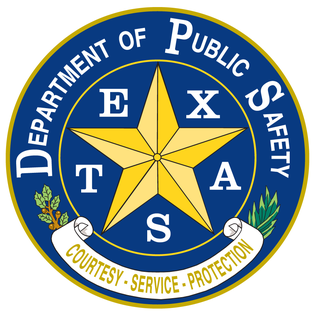
The Department of Public Safety of the State of Texas, commonly known as the Texas Department of Public Safety (DPS), is a department of the state government of Texas. The DPS is responsible for statewide law enforcement and driver license administration. The Public Safety Commission oversees the DPS. However, under state law, the Governor of Texas may assume command of the department during a public disaster, riot, insurrection, formation of a dangerous resistance to enforcement of law, or to perform his constitutional duty to enforce law. The commission's five members are appointed by the governor and confirmed by the Texas Senate, to serve without pay for staggered, six-year terms. The commission formulates plans and policies for enforcing criminal, traffic and safety laws, preventing and detecting crime, apprehending law violators, and educating citizens about laws and public safety.

The Massachusetts State Police (MSP) is an agency of the Commonwealth of Massachusetts' Executive Office of Public Safety and Security, responsible for law enforcement and vehicle regulation across the state. As of 2022, it has 2,067 sworn troopers and 611 civilian support staff for a total of 2,678 personnel, making it the largest law enforcement agency in New England. The MSP is headed by Interim Colonel Jack Mawn.

The West Virginia State Police (WVSP) is a state law enforcement agency in the United States that provides police services to the residents of West Virginia. It is the fourth-oldest state police agency in the US. The WVSP was disbanded due to their involvement in quelling of the uprisings on behalf of the coal and mine companies which were surrounding the concept of organized labor in the coal and mine industries. The WVSP was then reorganized as the Department of Public Safety in the second extraordinary session of the West Virginia Legislature on June 19, 1919, as a result of their involvement.

The Alaska State Troopers, officially the Division of Alaska State Troopers (AST), is the state police agency of the U.S. state of Alaska. It is a division of the Alaska Department of Public Safety (DPS). The AST is a full-service law enforcement agency that handles both traffic and criminal law enforcement. The AST is also involved in apprehending fugitives as part of the Alaska Fugitive Task Force, an inter-agency collaborative of Alaska police departments that cooperates with police agencies throughout the United States and less commonly with Interpol in apprehending wanted men and women. Unlike many lower 48 states, the AST also serves as Alaska’s primary environmental law enforcement agency; troopers assigned to the AST’s Division of Alaska Wildlife Troopers are known as "Alaska Wildlife Troopers" and primarily serve as game wardens, although they retain the same powers as other Alaskan state troopers.

The Michigan State Police (MSP) is the state police agency for the U.S. state of Michigan. The MSP is a full-service law enforcement agency, with its sworn members having full police powers statewide.
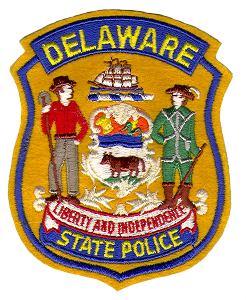
The Delaware State Police (DSP) is a division of the Delaware Department of Public Safety and Homeland Security and is responsible for traffic regulation and law enforcement across the US State of Delaware, especially in areas underserved by local police departments. The DSP is headquartered in the capital Dover, Delaware.
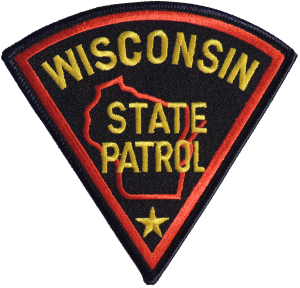
The Wisconsin State Patrol is the state patrol for the state of Wisconsin and is a division of the Wisconsin Department of Transportation. The Wisconsin State Patrol enforces traffic and criminal laws, oversees the motor carrier safety and weight facilities (SWEFs), inspects and regulates motor carriers, school buses and ambulances, and assists local law enforcement agencies with traffic safety, civil disturbances and disasters.

The Florida Highway Patrol (FHP) is a division of the Florida Department of Highway Safety and Motor Vehicles. It is Florida's highway patrol and is the primary law enforcement agency charged with investigating traffic crashes and criminal laws on the state's highways.

The Illinois State Police (ISP) is the state police agency of the state of Illinois. The Illinois State Police is responsible for traffic safety on more than 300,000 miles of total roadway, including 2,185 miles of Interstate Highways and 15,969 miles of State Highways. Currently, almost 3,000 sworn and civilian personnel make up the Illinois State Police.
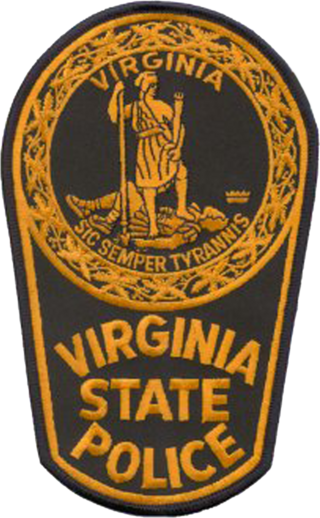
The Virginia State Police, officially the Virginia Department of State Police, conceived in 1919 and established in 1932, is the state police force for the U.S. state of Virginia. The agency originated out of the Virginia Department of Motor Vehicles as an inspector and enforcer of highway laws. It is currently one of fourteen agencies within the Cabinet Secretariat of Public Safety, under the leadership of Secretary Brian Moran until his resignation in January 2022. On January 18, 2018, Gary T. Settle was sworn in as Superintendent of the Virginia State Police. Colonel Settle replaced retiring Colonel W. Steven Flaherty, who had served since 2003.
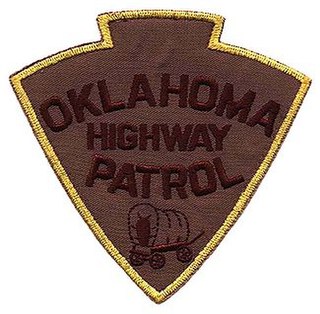
The Oklahoma Highway Patrol (OHP) is a major state law enforcement agency of the government of Oklahoma. A division of the Oklahoma Department of Public Safety, the OHP has traffic enforcement jurisdiction throughout the state. OHP was legislatively created on July 1, 1937, due to the growing problem of motor vehicle collisions, the expansion of highway systems, and the increase in criminal activities.

The Arizona Department of Public Safety (AZDPS) or Arizona Highway Patrol (AHP) is a state-level law enforcement agency with a primary function of patrolling and enforcing state laws on Arizona highways. Their headquarters are in Phoenix.

The Minnesota State Patrol is the primary state patrol agency for Minnesota and serves as the de facto state police for the state. While Minnesota State Patrol troopers have full powers of arrest throughout the state, their primary function is traffic safety and vehicle law enforcement. The State Patrol is a division of the Minnesota Department of Public Safety.

The Indiana State Police is the statewide law enforcement agency for the U.S. state of Indiana. Indiana was the 12th state to offer protection to its citizens with a state police force.

The Maine State Police (MSP) is the state police agency for Maine, which has jurisdiction across the state and was created in 1921.
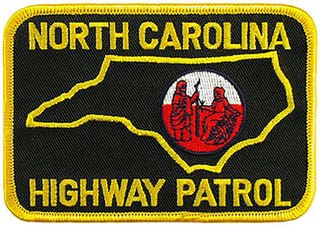
The North Carolina State Highway Patrol (NCSHP) is the highway patrol agency for North Carolina which has no per-se "state police" agency. The Patrol has jurisdiction anywhere in the state except for federal or military installations and on the Cherokee Indian Reservation or on Cherokee outlying lands in the western mountains. NCSHP personnel at times conduct formations, inspections, honor guard activities. The primary mission of the North Carolina State Highway Patrol is to ensure safe and efficient transportation on the streets and highways, reduce crime, protect against terrorism, enforce motor vehicle laws, and respond to natural and man-made disasters.

The Ohio State Highway Patrol is a division of the Ohio Department of Public Safety and has the primary responsibility of traffic enforcement in the U.S. state of Ohio.

The Maryland Natural Resources Police (NRP) is the law enforcement arm of the Maryland Department of Natural Resources (DNR), tasked with enforcing laws on the state's public lands and waterways, protecting fish and wildlife, and leading search and rescue efforts. The Natural Resources Police is also the state's maritime homeland security agency.

The Frederick County Sheriff's Office (FCSO) is the primary law enforcement agency serving a population of 222,938 residents within the 662.88 square miles (1,717 km2) area of Frederick County, Maryland.

In the United States, the state police is a police body unique to each U.S. state, having statewide authority to conduct law enforcement activities and criminal investigations. In general, state police officers or highway patrol officers, known as state troopers, perform functions that do not fall within the jurisdiction of a county’s sheriff, such as enforcing traffic laws on state highways and interstates, overseeing security of state capitol complexes, protecting governors, training new officers for local police forces too small to operate an academy and providing technological and scientific services. They also support local police and help to coordinate multi-jurisdictional task force activity in serious or complicated cases in states that grant full police powers statewide.






































